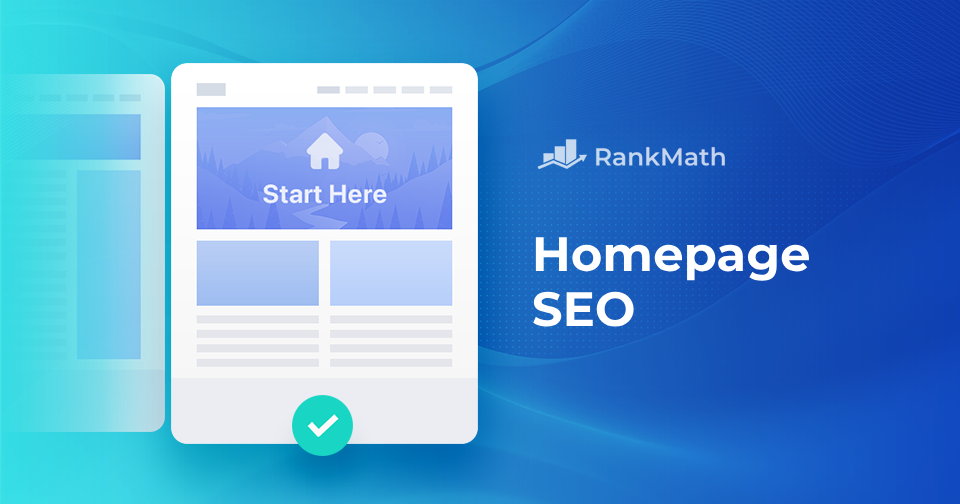Having a strong online presence starts with your homepage; it’s the first impression visitors get of your brand. But a homepage alone won’t bring results. To attract visitors and rank higher in search results, you need to optimize it for SEO.
That’s where homepage SEO comes in. By making strategic improvements, you can turn your homepage into a powerful driver of organic traffic, credibility, and conversions.

In this post, you’ll learn how to create an SEO-friendly homepage that attracts visitors and ranks well on search engine results pages (SERPs).
Table Of Contents
- What is Homepage SEO?
- Why is Optimizing Your Homepage’s SEO Important?
- How to Optimize Your Homepage for SEO
- Conduct Keyword Research
- Create Meta Tags
- Create Homepage Content
- Implement Schema Markup
- Optimize Header Tags
- Use Visuals
- Add Internal Links
- Build High-Quality Backlinks
- Improve Load Time and Page Experience with Core Web Vitals
- Optimize for Social Sharing with Open Graph & Twitter Cards
- Track and Analyze Performance
- Conclusion
1 What is Homepage SEO?
Homepage SEO is all about optimizing your website’s main page to make it more visible and rank higher on search engine results pages (SERPs).
It goes beyond just adding keywords, it’s about making your homepage relevant, authoritative, and user-friendly. Effective homepage SEO enables search engines to understand the content of your site and encourages users to explore it further.
Some of the key elements include:
- Conducting smart keyword research
- Creating valuable, relevant content
- Optimizing meta tags and headers
- Enhancing the user experience across devices
By combining these strategies, you can drive more organic traffic, boost engagement, and establish a strong first impression with both users and search engines.
2 Why is Optimizing Your Homepage SEO Important?
Your homepage is often the first point of contact between your website and potential visitors. By optimizing it, you ensure that visitors get a positive first impression and are encouraged to explore your site further.
- Boost overall visibility: Since your homepage usually gets the most internal links, optimizing it can improve your site’s performance across search engine results.
- Showcase your brand: Your homepage reflects your brand’s identity, values, and offerings. SEO optimization helps you communicate your message clearly and establish credibility.
- Attract targeted traffic: Higher search engine rankings bring more organic visitors, who are often more likely to convert into leads and customers.
- Stay ahead of competitors: A well-optimized homepage helps you capture your audience’s attention, outperform competitors, and drive meaningful business growth.
3 How to Create an SEO-Friendly Homepage
Let us now discuss how to create an SEO-friendly homepage.
3.1 Conduct Keyword Research
Keyword research is an essential component of homepage SEO, as it lays the foundation for optimizing your website’s homepage content to align with the terms and phrases your target audience is searching for.
Think about the main topics your website covers and what phrases potential visitors might use when looking for businesses like yours.
For example, if you run a bakery in Chicago, relevant keywords can include Bakery in Chicago, Chicago bakery delivery, cake delivery Chicago, artisan bread, etc.
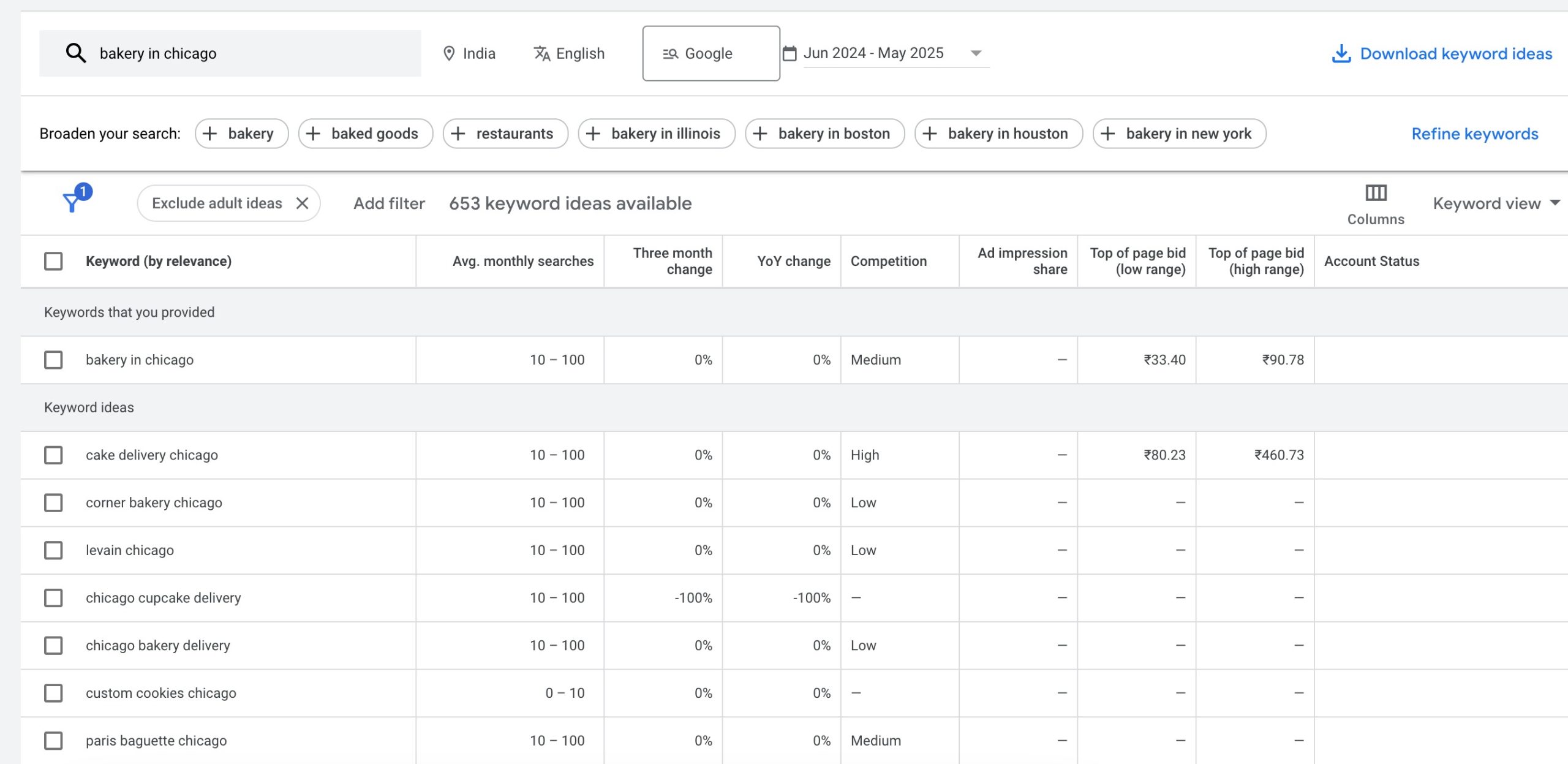
You can use tools like Semrush, Ubersuggest, Ahrefs, or other free tools to find keyword ideas and improve your SEO strategy.
Once you’ve gathered potential keyword ideas, analyze their:
- Search volume: How many visitors are searching for it monthly
- Competition level: How hard is it to rank for that keyword
- Relevance: How closely it aligns with your homepage content and goals
Aim to target keywords that strike a balance between relevance, moderate competition, and decent search volume.
Refer to our dedicated tutorial on keyword research to find keyword ideas easily.
3.2 Create Meta Tags
Meta tags help search engines and visitors understand what your homepage is about. Creating concise, compelling metadata ensures your homepage is relevant, engaging, and ranks well.
Let’s break down each meta tag and its significance in detail.
Title Tag
The title tag is perhaps the most important meta tag for homepage SEO.
It serves as your homepage’s title in search engine results and should accurately reflect its content while including relevant keywords.
For example, a bakery in Chicago can have a title tag like Chicago Bakery | Fresh Pastries & Delicious Cupcakes, effectively communicating the bakery’s location, offerings, and unique selling proposition.
The title tag should be 50-60 characters long to ensure it displays properly in search engine results. Include primary keywords at the beginning of the title to signal relevance to search engines.
Here’s what our title tag looks like in SERPS.
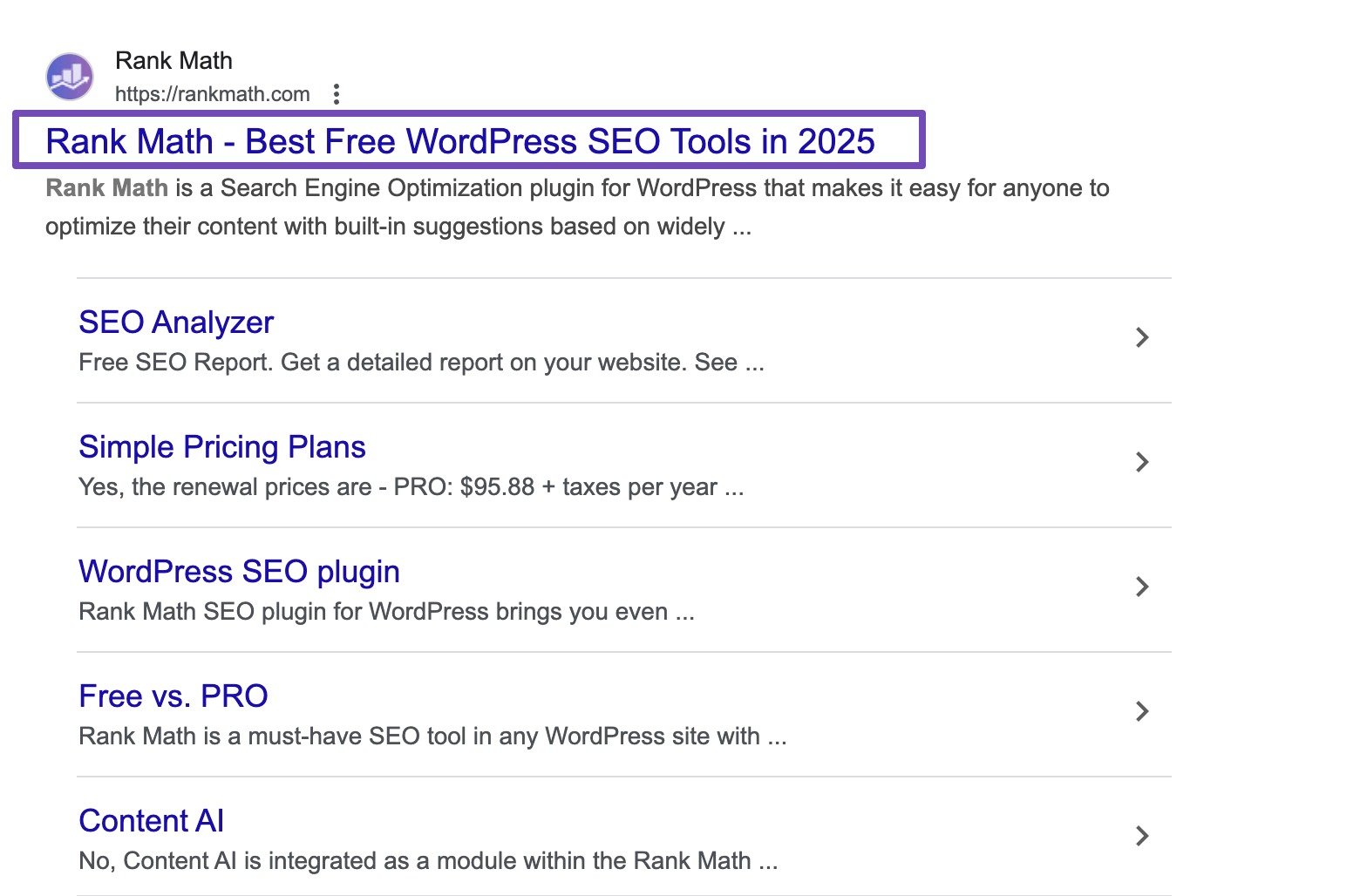
Meta Description
The meta description provides a brief summary of your homepage’s content and serves as a snippet in search engine results.
Keep it under 160 characters to ensure it’s fully displayed. It should be concise and engaging and include primary keywords to improve relevancy.

Continuing with the bakery example, the meta description can be: Welcome to Chicago Bakery! Indulge in our selection of fresh pastries and delicious cupcakes. Visit us today for a delightful treat!
Optimize the Meta Title and Description of Homepage in Rank Math
If you’re using Rank Math, optimizing your homepage’s meta title and description is simple and effective.
Navigate to Rank Math SEO → Titles & Meta from your WordPress dashboard. Click on the Homepage tab to customize the meta title and description specifically for your homepage.

Now, if you’re not sure which keywords to target in your title and description, use our SEO Analyzer Tool. Just enter the homepage URL and click ANALYZE. Within seconds, you’ll get a full report.
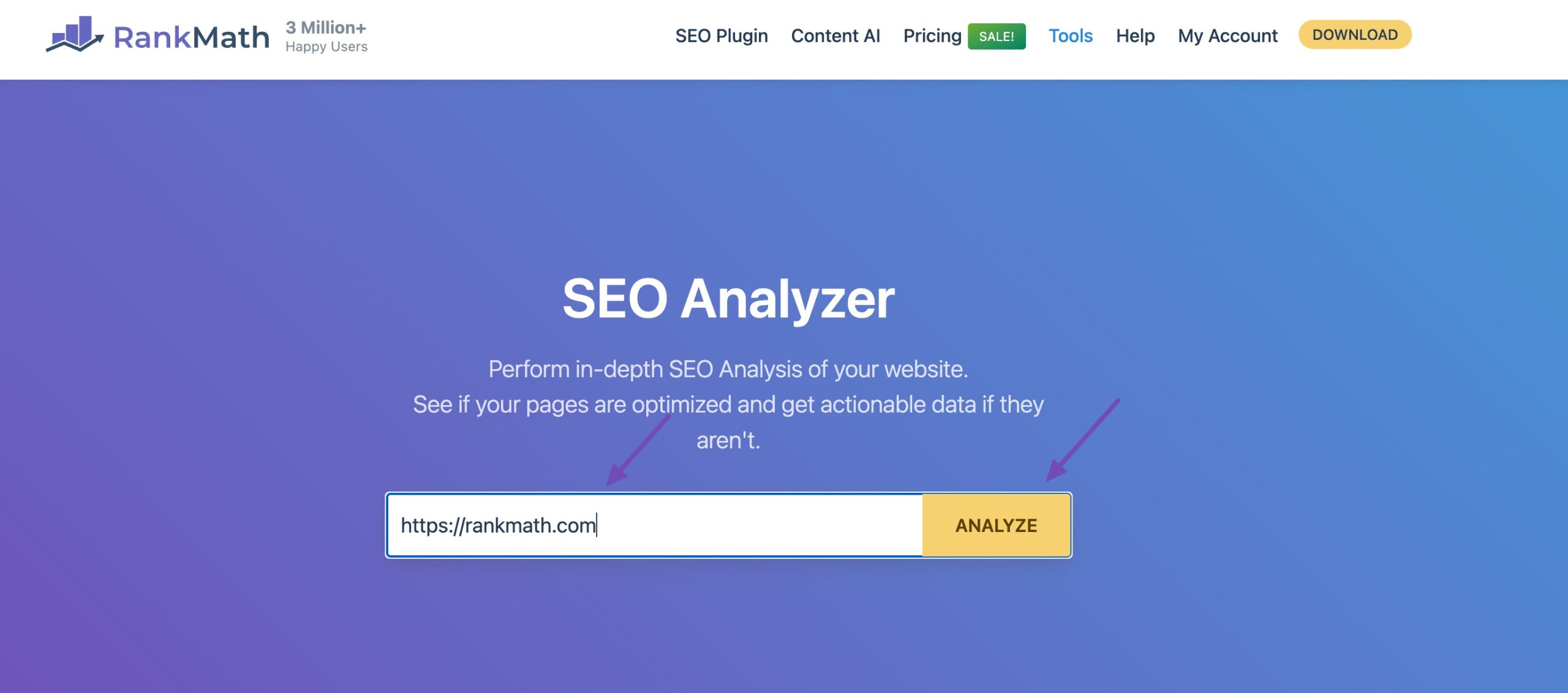
Look for the Common Keywords section; these are the keywords your homepage already has relevance for and should be optimized around for better rankings.

Refer to our dedicated tutorial on on-page SEO to optimize your homepage effectively.
3.3 Create Homepage Content
Your homepage content should grab attention immediately and clearly communicate your website’s purpose.
Ask yourself:
- What is the primary goal of your website?
- What value do you offer to visitors?
- Why should they stay and explore?
Briefly overview your products or services, highlighting key features and benefits.
For instance, Indulge in our wide selection of freshly baked pastries, from flaky croissants to decadent chocolate eclairs. We also specialize in custom cakes for all occasions, from birthdays to weddings.
When focusing on homepage SEO, ensure your content aligns with audience’s searches. Understanding the search intent and providing relevant answers or solutions can improve your visibility in search results.
Include your primary keyword in your content’s main heading (H1 tag). This helps search engines understand your page’s topic and can improve its ranking for that keyword.
Ensure that your content is accurate, well-researched, and factually correct. Strive to create content that stands out from the competition. Avoid duplicating existing content and provide a fresh perspective, unique insights, or original ideas that differentiate your content from others in your niche.
You can use Rank Math’s Content AI to create content for your homepage.
Demonstrate Trustworthiness
Include testimonials from satisfied customers or clients directly on your homepage. Positive feedback and reviews can instil confidence in visitors and demonstrate the quality of your products or services. Place testimonials prominently, using quotes or star ratings to highlight customer satisfaction.

Provide clear contact information on your homepage to make it easy for visitors to reach you. Include a dedicated section with your phone number, email address, and physical address, if applicable. Additionally, include a prominent link to your contact page for visitors seeking more information or assistance.
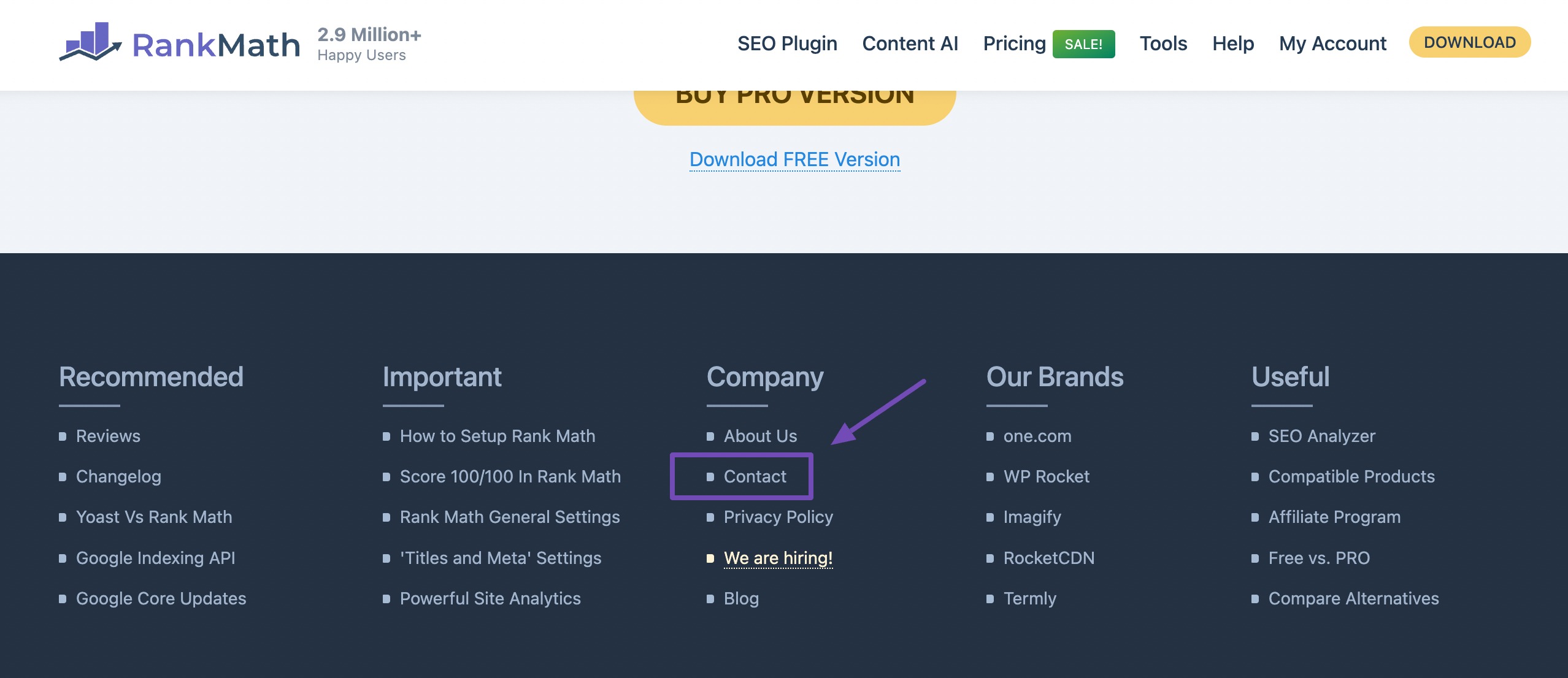
Display your company logo prominently on your homepage to reinforce brand recognition and establish trust. Ensure that the logo is high-quality and visually appealing, and links back to your homepage when clicked.
You can easily set the site logo in Rank Math by navigating to Titles & Meta → Local SEO from your WordPress dashboard. Scroll down a little and you’ll see the logo section, where it recommends having a square image with a minimum dimension of 112 pixels on each side.

Also, highlight social proof indicators such as the number of customers served, years in business, or positive press coverage.
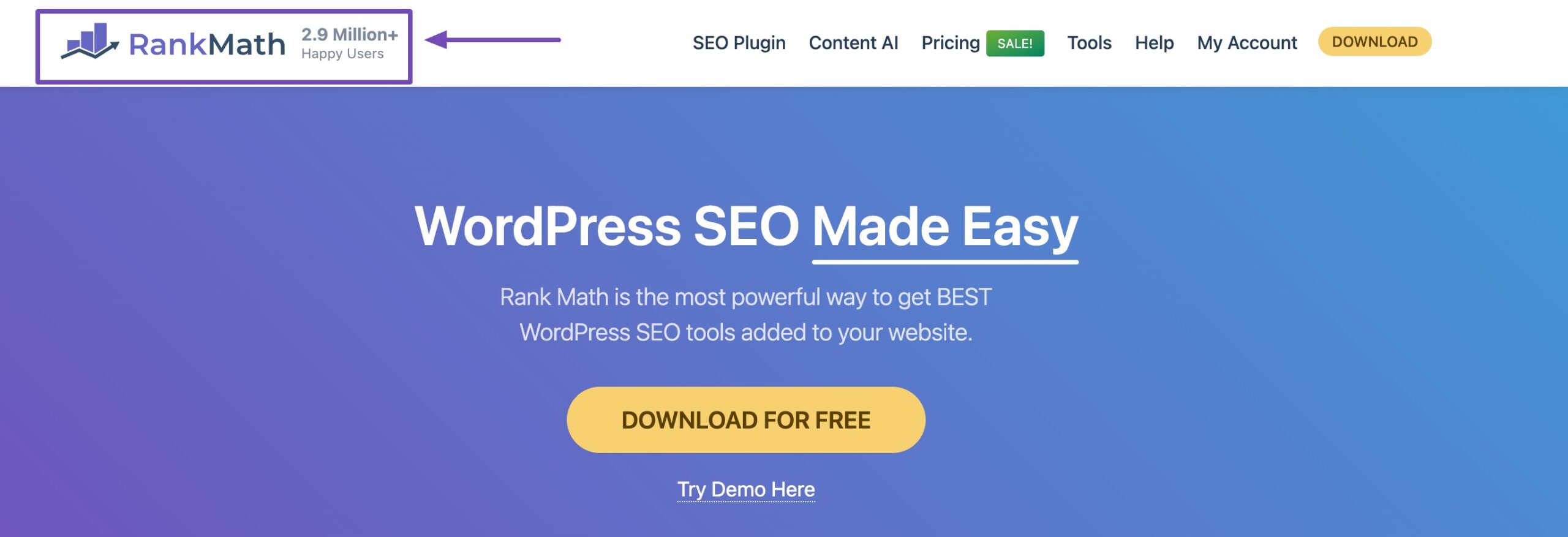
3.4 Implement Schema Markup
Implementing Schema markup is also necessary to create an SEO-friendly homepage.
While it’s common to see Article Schema implemented across blog posts and editorial content, it’s not suitable for your homepage, which typically doesn’t function as a standalone article.
Instead, your homepage should use Person or Organization Schema, which helps search engines understand the overall identity and purpose of your website. This structured data is important for improving your site’s appearance in search results and enhancing your brand credibility.
- Use Person Schema if the website represents an individual (e.g., a personal blog, consultant, or influencer).
- Use Organization Schema if the website represents a company, brand, agency, or local business.
You can easily configure this using the Titles & Meta → Local SEO tab in Rank Math. It contains essential fields that apply to all websites, blogs, businesses, and personal brands.
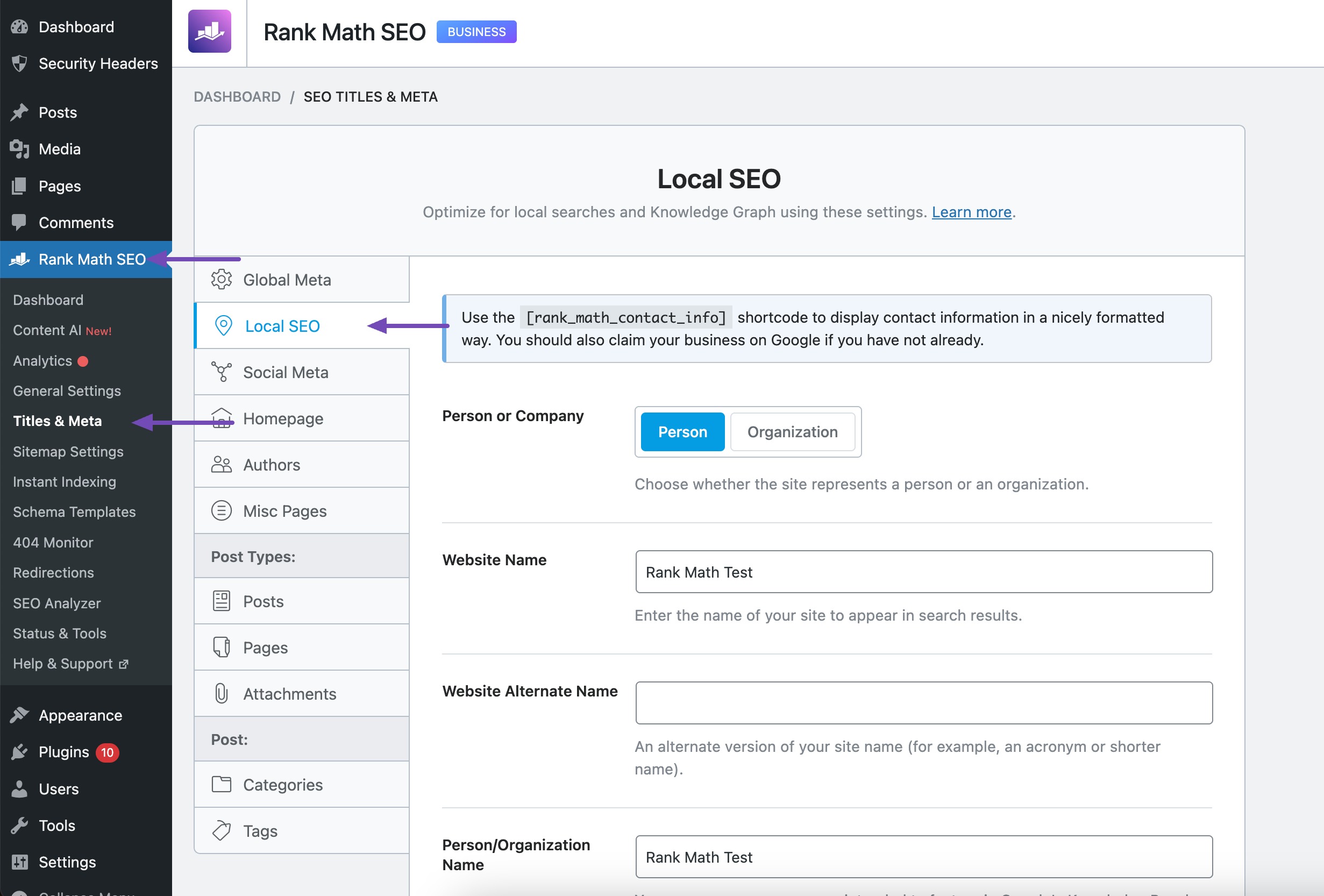
In the Organization Schema, you can provide the details of your company. Here are the Schema markup fields for Organization:
- Website Name
- Website Alternate Name
- Person/Organization Name
- Description
- Logo
- URL
- Use Multiple Locations
- Address
- Address Format
- Business Type
- Opening Hours
- Opening Hours Format
- Phone Number
- Price Range
- Additional Info
- Google Maps API Key
- Geo Coordinates
- About Page
- Contact Page
In the Person Schema, below are the fields in Rank Math:
- Website Name
- Website Alternate Name
- Person/Organization Name
- Logo
- URL
- Address
- About Page
- Phone Number
- Contact page
3.5 Optimize Header Tags
You need to optimize the header tags to create an SEO-friendly homepage. This involves strategically using H1, H2, and other heading tags to structure your content to improve readability, enhance user experience, and signal relevance to search engines.
The H1 tag should contain your homepage’s primary keyword or main topic. Keep it concise, descriptive, and relevant to the overall content of the page.
For instance:
<h1>Welcome to NYC Bakery: Fresh Pastries & Delicious Cupcakes</h1>Use H2 tags to divide your homepage content into sections, each focusing on a specific aspect or offering. Include secondary keywords or related topics in H2 headings to provide additional context.
<h2>Our Signature Pastries</h2>
<p>Explore our mouthwatering selection of croissants, muffins, and scones.</p>
<h2>Custom Cake Creations</h2>
<p>Indulge in our custom-designed cakes for weddings, birthdays, and special occasions.</p>Maintain a logical hierarchy of headings, with H2 tags nested under the main H1 heading.
Use H3, H4, and other heading tags for further subheadings or subsections within each H2 section.
<h1>Welcome to NYC Bakery</h1>
<h2>Our Signature Pastries</h2>
<h3>Flaky Croissants</h3>
<h3>Decadent Muffins</h3>
<h2>Custom Cake Creations</h2>
<h3>Wedding Cakes</h3>
<h3>Birthday Cakes</h3>Include variations of your primary and secondary keywords naturally within heading tags. Avoid keyword stuffing and prioritize readability and user experience.
3.6 Use Visuals
Adding visuals to your homepage is a powerful strategy to improve your homepage SEO, engage visitors, and improve overall user experience.
Including high-quality images relevant to your content can make your homepage more visually appealing and engaging.
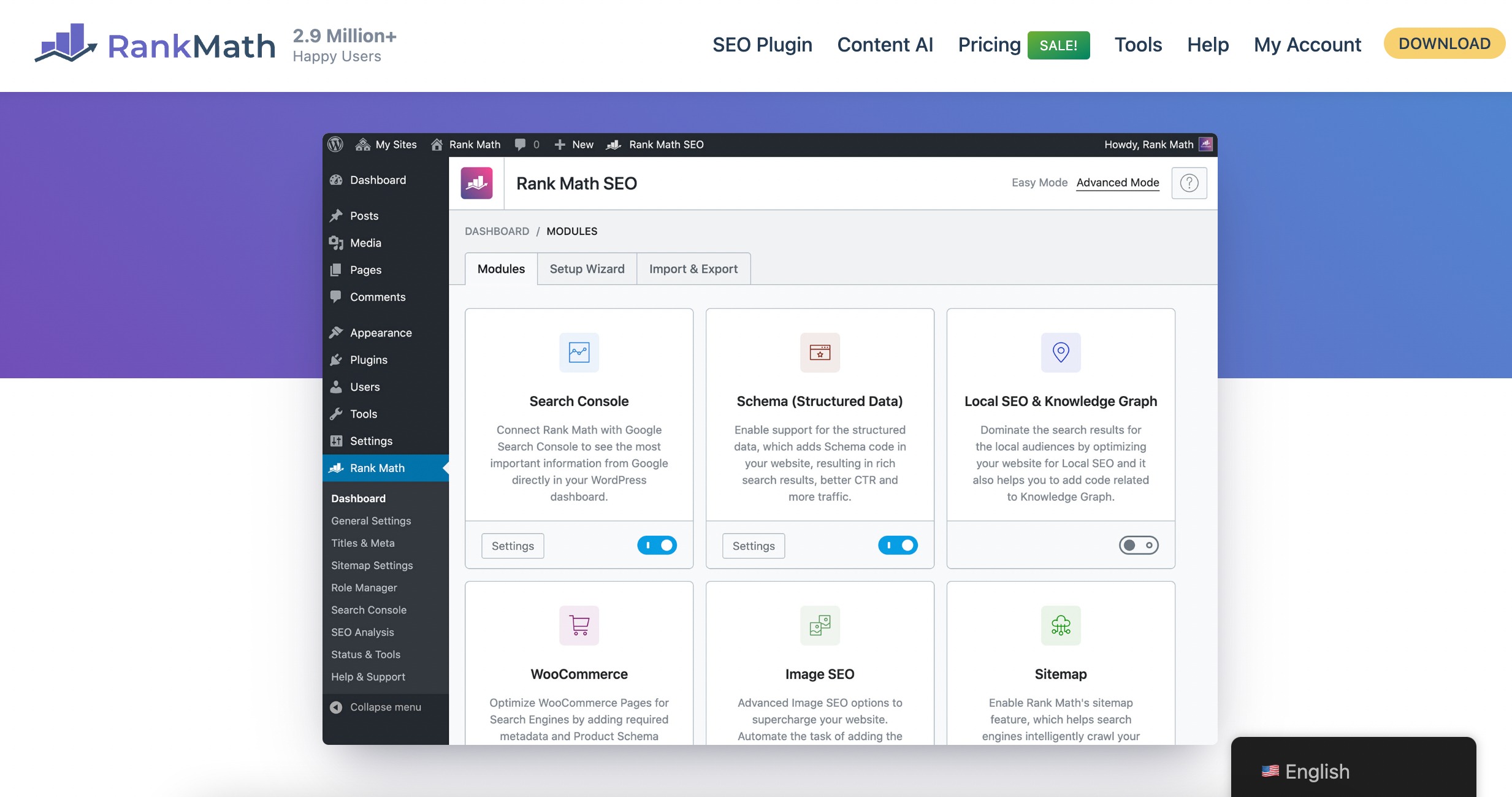
To get the SEO benefits from images:
- Use descriptive filenames (e.g.,
artisan-bread-chicago.jpg) - Add alt text with relevant keywords to improve accessibility and SEO
- Include captions where appropriate to provide context for users and search engines
Refer to our dedicated tutorial on image optimization to optimize your images.
Integrating videos can improve your homepage SEO by increasing dwell time and engagement, signaling to search engines that your website offers valuable content.
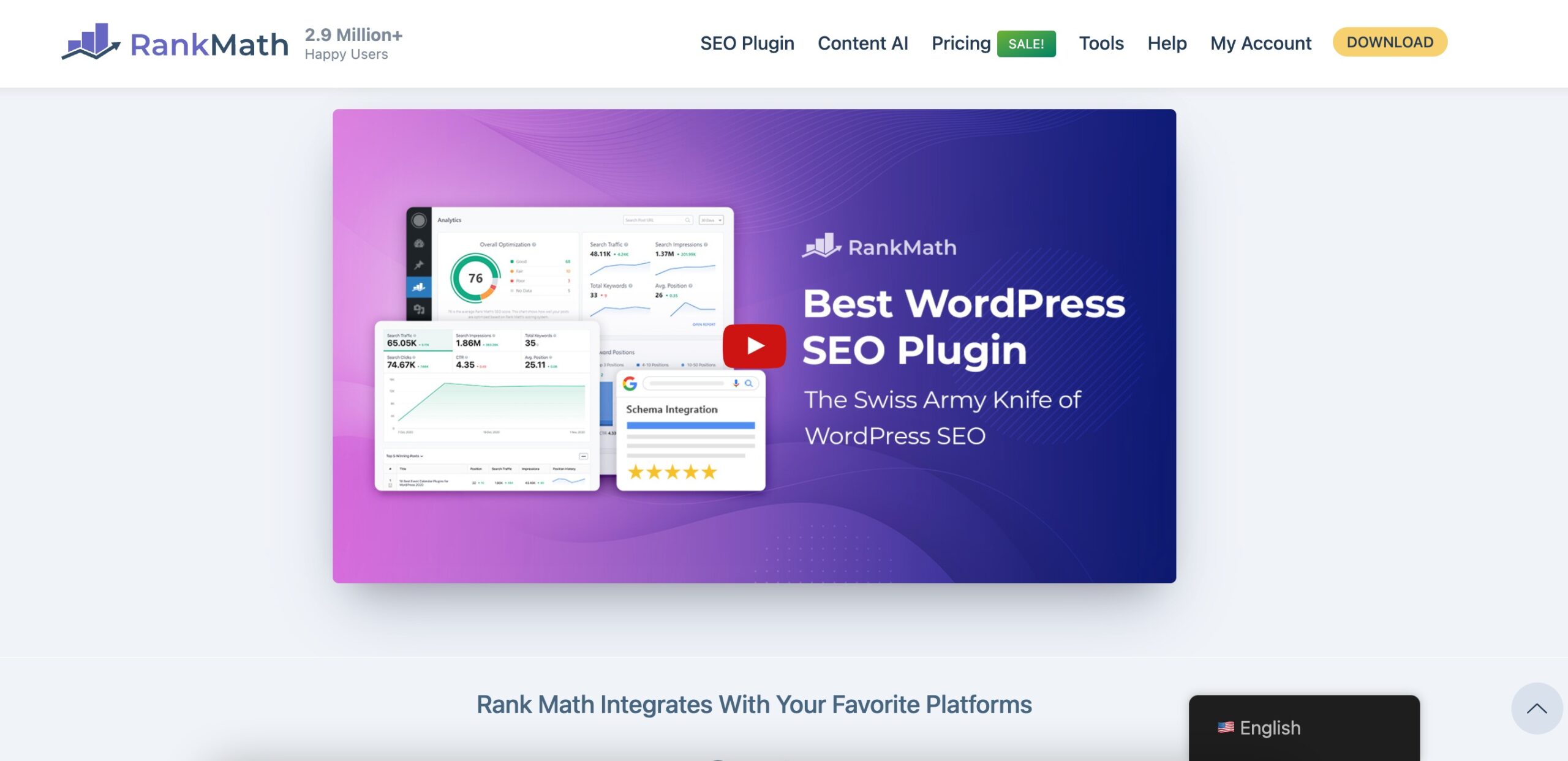
Here are a few tips for homepage video content:
- Create informative or entertaining videos that align with your brand
- Use targeted keywords in the video title, description, and tags
- Consider embedding explainer videos, product demos, or brand stories
3.7 Add Internal Links
Adding internal links to your homepage is a fundamental aspect of SEO strategy, as it enhances website navigation, distributes link authority, and boosts the visibility of important pages.
Feature recent or popular blog posts, articles, or resources on your homepage to engage an audience and drive traffic to your content. Link these featured items to their corresponding blog posts or articles.
You can also add a footer section with links to essential pages such as About Us, Contact, FAQ, or Terms of Service. This ensures easy access to important information across the website.
For instance, our homepage includes the links to other important pages on our site.

Also, ensure the links do not clutter your homepage and navigate your visitors to valuable content.
Refer to our dedicated tutorial on internal links to build strategies to improve your homepage SEO.
3.8 Build High-Quality Backlinks
Building high-quality backlinks for your homepage is essential for improving its search engine ranking and overall SEO performance.
Start by developing homepage content that naturally attracts backlinks. Focus on creating high-quality, helpful, and engaging content that:
- Offers unique insights
- Solves specific problems
- Shares valuable resources or tools
When your content stands out, other websites are more likely to reference and link to it.
Write guest posts for relevant websites within your niche and include a backlink to your homepage in the author bio or within the content where appropriate. Guest blogging allows you to showcase your expertise and reach new audiences while earning valuable backlinks.
Refer to our dedicated link-building tutorial to build links to your website.
3.9 Improve Load Time and Page Experience with Core Web Vitals
The speed at which your webpage loads, known as page load speed, significantly affects both SEO and user experience, whether on desktop or mobile. If visitors to your homepage encounter a lengthy delay in content loading, they’re likely to navigate away before engaging with your content.
Google also considers Core Web Vitals, a set of page experience signals, as a ranking factor. These vitals measure how quickly and smoothly your homepage loads and responds.
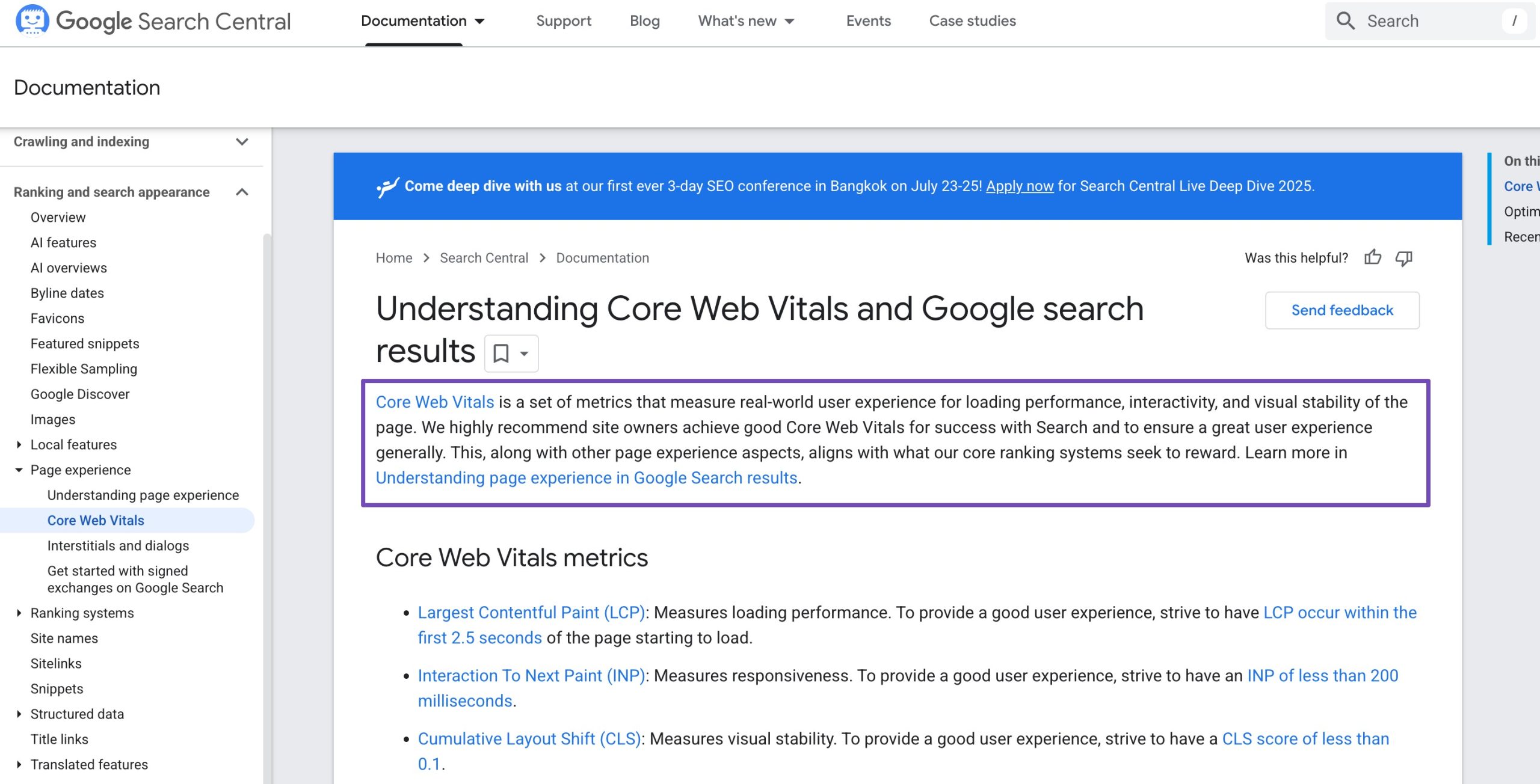
Regularly testing and optimizing your homepage speed on both desktop and mobile ensures a smoother user experience and stronger rankings over time.
Use performance tools such as:
- Google PageSpeed Insights
- GTmetrix
- Google Search Console → Core Web Vitals report
These tools identify issues affecting your homepage speed and give recommendations for improvement. By optimizing your homepage for both speed and Core Web Vitals, you enhance user satisfaction and increase your chances of ranking higher in search results.
Refer to our dedicated tutorial on speed optimization to fine-tune your homepage performance.
3.10 Optimize for Social Sharing with Open Graph & Twitter Cards
Enhancing how your homepage appears on social media can help increase visibility, drive more traffic, and boost engagement. That’s where Open Graph (OG) tags and Twitter Cards come in.
These meta tags control the preview information shown when someone shares your homepage on platforms like Facebook, LinkedIn, or Twitter. They let you define:
- The title
- Description
- Featured image
- URL
- And more
If you’re using Rank Math, you don’t need to add these tags manually. Rank Math automatically generates Open Graph and Twitter Card tags for your homepage and other pages.
This ensures your homepage looks polished and professional when shared, without requiring extra technical setup.
Refer to our dedicated tutorial on Open Graph Meta Tags to learn how to use them on your website using the Rank Math SEO plugin.
3.11 Track and Analyze Performance
To effectively track and analyze your homepage, start by defining key performance indicators (KPIs) aligned with your goals.
Set up analytics tools like Google Analytics to monitor traffic volume, bounce rate, and conversion rate. Analyze traffic sources to evaluate user behaviour metrics like time on page and pages per session to identify engagement patterns and areas for improvement.
Track conversions and goals to measure the effectiveness of your homepage in driving desired actions.
You can also use Rank Math’s SEO Analyzer to enhance your homepage SEO and improve the search engine rankings.
The SEO Analyzer evaluates various aspects of your webpage, including keyword usage, readability, meta tags, internal and external links, heading structure, image optimization, and more.
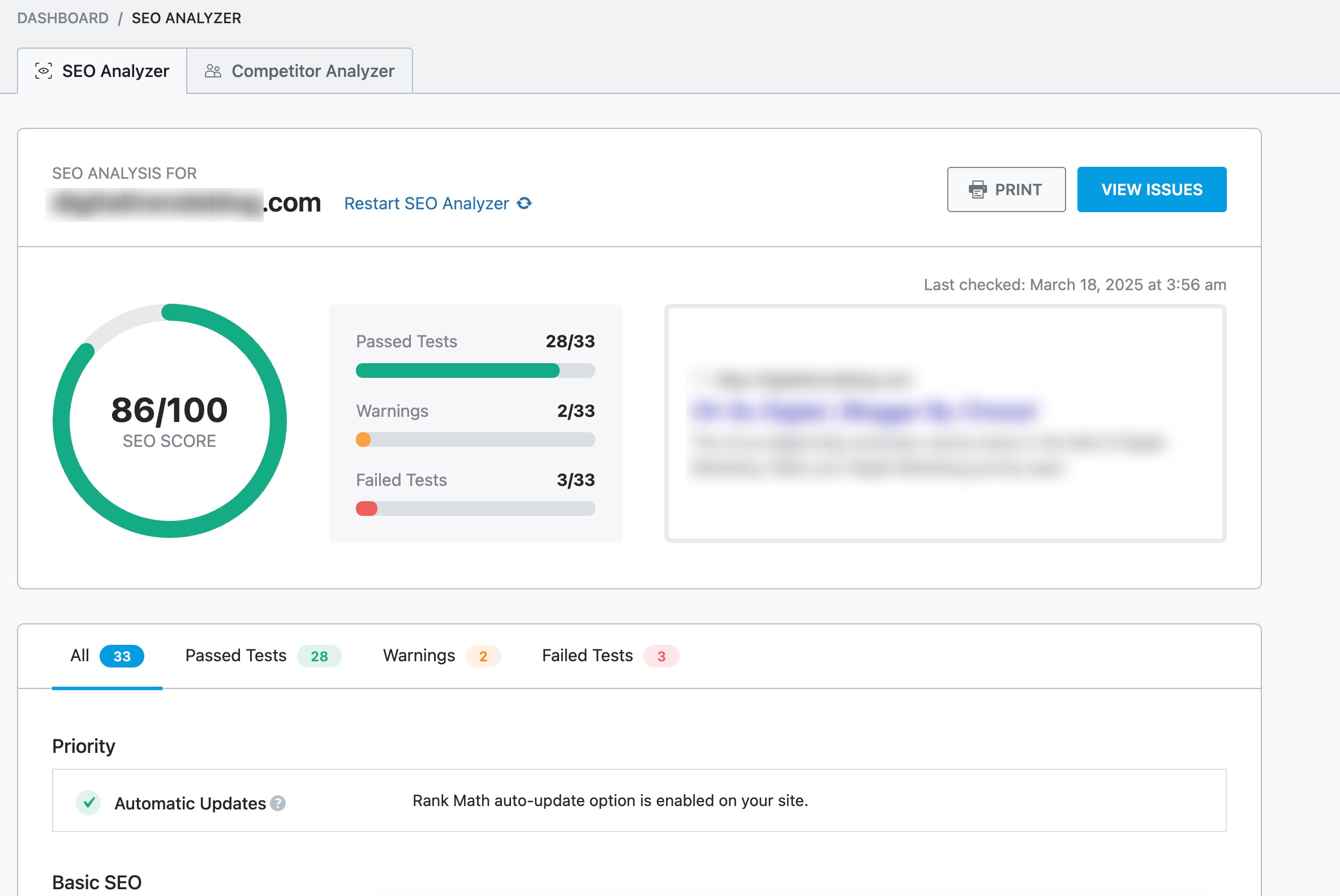
By identifying areas of improvement and providing actionable recommendations, Rank Math’s SEO Analyzer helps you optimize your content effectively for better search engine performance.
4 Conclusion
Creating an SEO-friendly homepage is key to improving your search engine visibility, attracting organic traffic, and providing a great experience for your visitors.
To get the most out of your homepage, focus on best practices such as:
- Optimizing meta tags
- Integrating relevant keywords
- Improving page load speed
- Strengthening internal linking
By prioritizing these strategies and regularly refining your homepage based on analytics and user feedback, you can build a strong foundation for your website’s success and drive meaningful results for your business.
If you like this post, let us know by Tweeting @rankmathseo.
